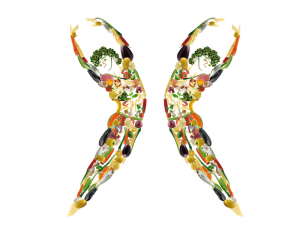Approximately 50% of UK adults will have a headache each year, most of these are not dangerous, but they can debilitate and sometimes be a challenge to describe; the pain may be generalised involving the whole head or affect one part of the face, head or eye. Symptoms can vary from sharp and throbbing to dull and constant. They can be intermittent, mild, unrelenting or intense.
has no pain receptors but the pain of a headache can originate from any of the tissues and structures that surround the head, skull, neck or the brain. There are lots; muscles, the membranes that cover bones or the brain and spinal cord (the meninges),. The sinuses, eyes or ears, irritated or inflamed arteries, veins, and nerves can also be a cause of head and neck pain.
As there are over 200 types of a headache, the International Headache Society reclassified headaches and head pain in 2013, with the aim to help healthcare professionals make a more specific diagnosis and offer better options for treatment and management. Interestingly, for people living with persistent headaches, the updated guidelines also reported that some people might have symptoms consistent with more than one type of headache at the same time, increasing the treatment and management challenge for them and their doctor.
There are three major categories of headaches
- Primary, these include tension, migraine, and cluster headaches.
- Secondary, resulting from an illness, injury or trauma.
- Other headaches including cranial neuralgias and facial pain.
Primary headaches
Underlying disease or structural problems do not produce these headaches, and around 90% of all headaches fall into this category.
Tension headaches
Tension headaches are the most common primary headache and appear to be related to stiffness at the bottom of the neck; they occur more frequently in women. These are described as classic “band-like” pressure on both sides of the head with non-pulsing pain and no other symptoms.
Migraine headaches
Although recognised as the second most prevalent primary headache migraine is not well understood by doctors or scientists. Recent studies suggest they are caused by the nerves in the brain not functioning correctly; older ones (studies) report that they may be due to hormonal or chemical imbalances. Migraines can affect anyone, children, teenagers, and adults, but more frequently affect women. Migraines are a distinct one-sided headache accompanied by sensory disturbance such as photophobia (sensitivity to light) and nausea, Some people also experience auras, visual or olfactory (smell) before or during a migraine.
Cluster headaches
Are characterised by short-lived episodes of severe pain, with other symptoms usually around one eye including watering or redness and nasal congestion. Cluster headaches are relatively rare, and have a pattern of daily pain at the same time of day, often for several weeks or months. They can then spontaneously disappear for weeks, and return without warning. The typical patient is a male in their late 20s although women and children can also be affected.
Secondary headaches
An underlying illness such as a sinus infection can cause a secondary headache. They can also result from something more serious such as head trauma or concussion. All secondary headaches should be medically assessed as they may be a symptom of a life-threatening condition such as bleeding in the brain or meningitis.
Other headaches
Facial pain and cranial neuralgias
Head and face pain can also be classified as a headache, caused by nerve inflammation or irritation. Trigeminal neuralgia is one example of this, the nerve irritation results in intense facial pain.
Medication overuse headache
Frequent use of pain medications can lead to persistent headaches. Medication overuse headache used to be called “a rebound headache”.
When to seek medical help
Repetitive headaches should be a warning sign to see a doctor.
A doctor should also check a new headache or a change in a persistent headache.
More
Headaches are a complex condition with a wide variety of signs and symptoms, Coming in part 2 Headaches, causes, red flags and treatment
Disclaimer:
Please note: For guidance only, this should not be considered a substitute for medical advice, diagnosis or treatment given in person by an appropriately trained health professional.
SaveSave
SaveSave







